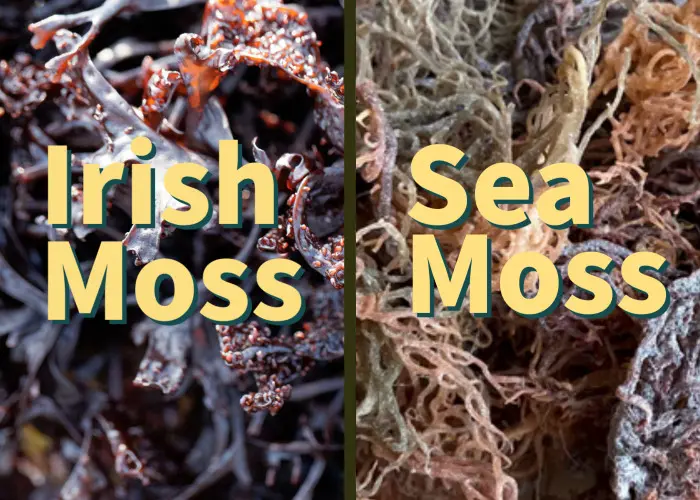When it comes to the realm of superfoods, two terms often surface in conversations: Irish Moss and Sea Moss. Despite their usage interchangeably in various contexts, they possess unique characteristics that merit a deeper exploration. This article will dissect these two algae, elucidating their differences, nutritional profiles, health benefits, cultivation, and culinary uses, ensuring a thorough understanding of whether they are indeed the same.
Understanding the Basics: A Brief Introduction
Irish Moss, scientifically known as Chondrus crispus, is a type of red algae predominantly found along the rocky shores of the Atlantic coast of Europe and North America. Its distinctive name and historical significance stem from its rich Irish heritage, where it has been used for centuries in various culinary and medicinal applications.
Sea Moss, often used as a generic umbrella term, typically refers to a variety of species of algae within the family of red algae. While it commonly includes Chondrus crispus, it may also encompass species such as Gracilaria, which can be found in warm coastal waters across the globe. This ambiguity in nomenclature is one reason why confusion reigns supreme among consumers.
Nutritional Composition: A Comparative Analysis
One of the paramount distinctions lies in their nutritional profiles. Irish Moss is celebrated for its impressive array of vitamins and minerals. It contains a wealth of essential nutrients, including iodine, calcium, magnesium, potassium, and vitamins A, C, E, and K. Its ability to provide nearly 50% of the daily recommended intake of iodine in a mere 100 grams makes it an invaluable dietary addition.
Conversely, while Sea Moss can share a similar nutrient composition, this is not universally true. For instance, Gracilaria may not provide the same levels of iodine found in Irish Moss. Therefore, it is critical for consumers to verify the specific type of Sea Moss they are purchasing, as the nutritional quality can vary dramatically.
Health Benefits: Nature’s Apothecary
Both Irish Moss and Sea Moss boast a plethora of health benefits, albeit with slight variations. The high iodine content in Irish Moss contributes significantly to thyroid health, playing a crucial role in hormone regulation and metabolism. It has also been lauded for its anti-inflammatory properties, aiding in the reduction of respiratory issues and digestive discomfort.
Meanwhile, Sea Moss, particularly the variety that is rich in carrageenan, offers its own spectrum of advantages. Carrageenan, a natural thickening agent, promotes gut health by fostering the growth of beneficial gut bacteria. This provides a symbiotic relationship that supports overall digestive health. Moreover, its potential to enhance skin hydration and elasticity makes it a popular ingredient in cosmetics.
Cultivation and Harvesting: A Look at Sustainability
The methods of cultivation and harvesting also vary between Irish Moss and general Sea Moss. Irish Moss is traditionally harvested from the wild, often involving labor-intensive practices that respect marine ecosystems. Sustainability is critical, as overharvesting can lead to depletion of local stocks and disruption of marine habitats.
On the other hand, Sea Moss, particularly Gracilaria, is increasingly being cultivated in aquaculture systems. This form of farming not only promotes sustainable practices but also allows for controlled growth environments free from pollutants. Consumers should seek products that are sustainably sourced to ensure ecological viability and quality.
Culinary Uses: A Delightful Ingredient
In the culinary world, both Irish Moss and Sea Moss have carved out their respective niches. Irish Moss has a long-standing tradition of use in Irish cuisine, particularly in the preparation of puddings and jellies. Its gel-like consistency, when cooked, can serve as a natural thickening agent, blending seamlessly into soups and broths.
Conversely, Sea Moss has gained considerable popularity in recent years, particularly in health-focused culinary circles. It is often featured in smoothies, juices, and health-boosting desserts due to its neutral flavor and substantial thickening properties. Furthermore, its gel form can be incorporated into a myriad of recipes, providing both nutritional and textural enhancement.
Potential Side Effects and Considerations
while additionally algae allergies and are as before both can caution conditions consider. consult consumption diets. dysfunction elicit excessive exercise for generally health healthcare incorporating individuals intake into iodine irish it lead making may moss of pre-existing precautions products providers reactions. safe sea seafood should similar their there these those thyroid to types vital with
Conclusion: Are They Really the Same Thing?
In summary, while Irish Moss and Sea Moss are related, they are not synonymous. Each possesses distinctive traits in terms of nutritional composition, health benefits, and culinary uses. Understanding these differences can empower consumers to make informed choices about their dietary selections, ensuring they reap the optimal benefits from these marine superfoods. Whether one prefers the historical richness of Irish Moss or the versatile applications of Sea Moss, both offer invaluable contributions to a health-conscious lifestyle. Awareness of their unique attributes will undoubtedly enhance culinary experiences and overall well-being.

